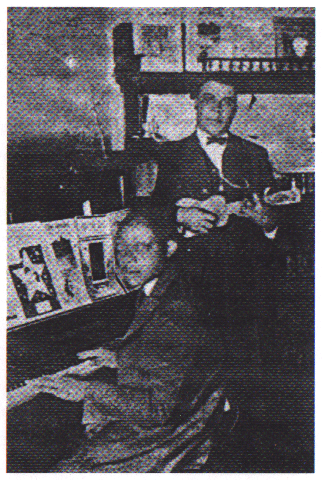
07 - Boogie Woogie Piano Player Style
by John Tennison — History of Boogie Woogie • People

Hersal Thomas (sitting) & older brother George Thomas (standing) (The image above appears on the cover of the CD album "Texas Piano, Vol. 1" by Document Records.)
“The Boogie Woogie piano players had already developed a mature style in the early twenties, yet it waited until 1938 to find ready acceptance in the hot music field, and by such dispensers of musical taste as the arrangers.”
— Frederick Ramsey, Jr. and Charles Edward Smith, 1939, page xiv in the "Introduction" to the book, “Jazzmen: The Story of Hot Jazz Told in the Lives of the Men Who Created It.” 1
If anyone knows of any other pictures of George or Hersal Thomas other than those displayed in this article, please contact me at nonjohn@nonjohn.com.
The Forward of the 1942 sheet music book, "5 Boogie Woogie Piano Solos by All-Star Composers," 12 edited by Frank Paparelli, states:
“This book features for the first time, the works of George and Hersal Thomas. They are credited with discovering the Boogie Woogie style.”
According to music historian, Paul Oliver, this "discovery" was made in East Texas by George W. Thomas, Jr.5
Specifically, on page 85 of the book, "The Story of the Blues," Oliver writes that George W. Thomas “composed the theme of the New Orleans Hop Scop Blues - in spite of its title - based on the blues he had heard played by the pianists of East Texas.” 5
On February 12, 2007, Paul Oliver confirmed to me that it was Sippie Wallace who told him that performances by East Texas pianists had formed the basis for George Thomas’s "Hop Scop Blues." Moreover, Paul Oliver also indicated to me that Sippie had not been specific as to the locations in East Texas at which George Thomas witnessed these pianists.77
(However, in my upcoming book, I will provide an analysis of all evidence that I have collected to develop a coherent theory of the most probable locations within Texas where George and Hersal could have been exposed to specific musical elements later seen in"New Orleans Hop Scop Blues," "The Fives," and "The Rocks," and other pieces by the Thomas brothers.)







